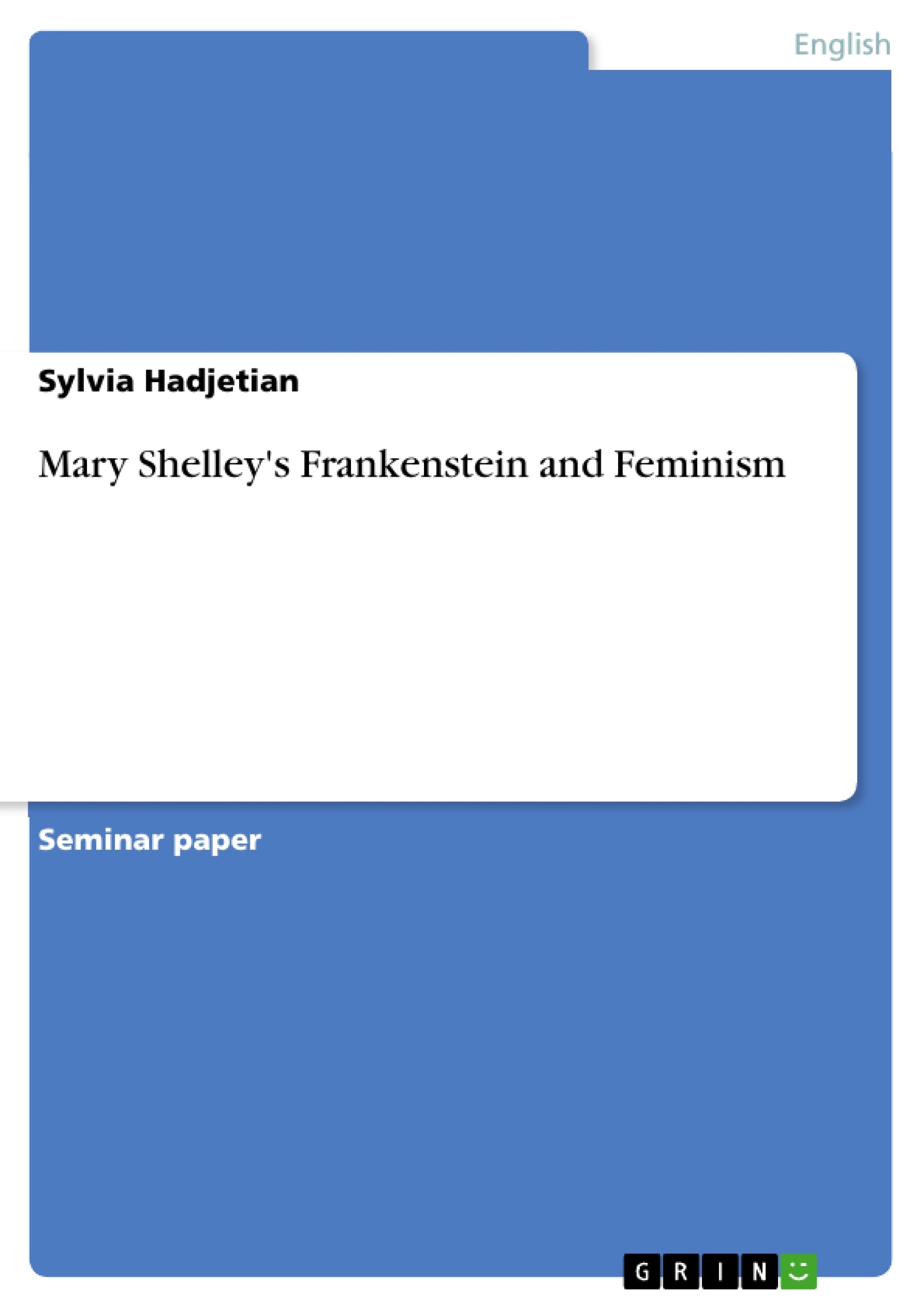Mary W. Shelley wrote her novel Frankenstein in a time in which women were expected to stay at home, care fore the children and do the household. Men normally worked outside the home in the public sphere, the division of roles was very strict and men were valued over women .
Science and research were domains exclusively for men. Although she was no scientist, her husband and several other scientists, e.g. Erasmus Darwin, influenced Mary Shelley. She has however somehow entered a male sphere, which was normally forbidden for her.
This could perhaps be one of the reasons why she did not publish her novel herself but her husband Percy.
Another reason for this could be that women writer had a bad reputation. Their works were normally regarded as bad because they did not have a good education . A woman writer was regarded as “unladylike” , she was expected to be “modest, chaste and docile” and an “angel” . The only duty of a woman was to be a good wife and especially a good mother, she was normally the only responsible for the education of the children because the men went to work and never participated in nurture.
This essay will examine the role of each woman in Frankenstein in the 19th century, the importance of a mother for a child and the failure of Victor Frankenstein to create and nurture a child without a woman.
Table of Contents
- Introduction
- The role of women in Frankenstein
- Margaret Saville
- Caroline Beaufort
- Elizabeth Lavenza
- Justine Moritz
- Agatha De Lacey
- Safie
- The importance of a mother for a child
- The development of the monster
- Conclusion
Objectives and Key Themes
This essay explores the roles of women in Mary Shelley's Frankenstein, particularly within the context of 19th-century societal expectations. The essay examines the importance of a mother figure in a child's development and the consequences of Victor Frankenstein's attempts to create and nurture a child without a woman's involvement.
- The representation of women in Frankenstein
- Societal expectations of women in the 19th century
- The significance of a mother's role in child development
- The impact of Victor Frankenstein's actions on his creation
- The consequences of neglecting a child's emotional and social needs
Chapter Summaries
The essay begins by introducing the first female character, Margaret Saville, Robert Walton's sister. Margaret embodies the typical societal role of women in the 19th century, remaining at home while her brother ventures into the public sphere. The essay then moves on to Caroline Beaufort, who exemplifies the ideal of female devotion. She cares for her ill father, marries his best friend, and becomes a dedicated wife and mother.
The essay then explores the character of Elizabeth Lavenza, an orphan raised by the Frankenstein family. Elizabeth serves as a surrogate mother figure to Victor and embodies the ideal of feminine love and care. The essay concludes with a brief analysis of the role of Justine Moritz, a young woman falsely accused of murder, highlighting the vulnerability of women in a patriarchal society.
Keywords
The essay focuses on themes of gender roles, maternal influence, and the consequences of scientific hubris in the context of Mary Shelley's Frankenstein. Key concepts include the representation of women in the 19th century, the importance of a mother's role in child development, and the ethical implications of creating life without considering its emotional and social needs.
- Quote paper
- Sylvia Hadjetian (Author), 2001, Mary Shelley's Frankenstein and Feminism, Munich, GRIN Verlag, https://www.grin.com/document/42827




